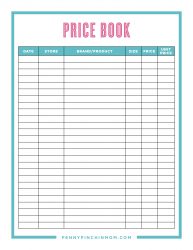The Average American family of four will spend upwards of $250 and more per week, to feed their family (source: USDA). If you do the math, that can mean $1,000 a month on food or $12,000 annually! That is a huge chunk of most budgets and can be pretty scary to actually see in writing.
While this is what the experts show, it does not need to be your reality. Sure, you can go coupon clipping crazy, but do you really have time to devote hours a week to cutting coupons? The truth is that most of us don’t. And, even if we did have extra time, we’d rather spend it with our families than sitting cutting and planning for hours on end.
There are actually very simple things you can do to truly save money – all without having to cut a coupon. I’ve got my five best tips here. I’ve been following these ideas for years and believe it or not – they really can work!
Read more:
HOW YOU CAN REDUCE YOUR GROCERY BILL

Credit: Aldi Corporate
1. Switch stores
If you have an Aldi nearby and are not shopping there you are truly missing out on the simplest way to save. It is true that they do not accept coupons, however, there is no need to!
The prices are truly up to 50% off (and more) beneath the prices you will pay at your regular store — even if you clipped a coupon.
You do need to watch as there are some times when your larger grocery store might offer a better discount on some items. However, if you don’t like to have to worry about price comparisons, Aldi is the perfect place to visit.
2. Shop ahead (stock your pantry and freezer)
Most people create a shopping list based upon the items they need. Sure, that is important and you will need to do that, but what can work even better is to not buy only what you need now, but add in those items you will need later on.
If you look at your store’s weekly ad, the items you see on the front page are called loss leaders. This means that the store may actually lose money on the prices they are offering to the public. For consumers it means you are truly getting some of the best prices you will ever find!
These sale items are often discounted as much as 50% off. When you find that is the price, it is your cue to stock up (create a stockpile)! This may mean that you purchase 3, 4 — or more — of the item on sale. Doing so allows you to feed your family and get the lowest price possible.
One thing to keep in mind is that this is how the store lures you in. They offer some items at extremely low prices and hope you will do all of your shopping there, which covers their loss. Don’t fall for the other “sale” prices as they are often not really a sale. Sure, they may be discounted, but if you flip the sales tag, you might find it is only marked down a few cents and truly not a deal at all.
3. Plan ahead
The reason most grocery budgets fail is because people fail to plan. Each week, sit down and plan your meals including breakfasts, lunches (don’t forget meals for work and school), snacks and dinner. However, make sure you do your planning the right way.
The problem most people face with meal planning and the budget is by doing it backwards. Most people will plan their meals and then create a shopping list. However, you should really work it from another direction.
First of all, check your pantry and your freezer. If you happened to get a really great deal on chicken breasts last week and 3 weeks earlier rice was on sale and you bought several bags, use that and create chicken and rice! You’ve now got a meal planned that will cost you absolutely NO MONEY out of your pocket.
Once you’ve planned your meals based upon what you have on hand, then look at the weekly ad. Check to see what is on sale that you might want to use for this week’s menu. Add in those few extra items you know your family needs this week.
Finally, plan out an additional meals you need and then add those items to your list. Hopefully, the majority of what you need for your food for the week is either already in your pantry or freezer or is going to be on sale.
With a bit of planning and changing your way of thinking, you really can knock down that weekly grocery budget.
4. Create and use a price book
As mentioned above, stores are notorious for offering amazing deals on items you need. I mention that you should stock up, but how much should you buy? That is a challenge, but if you start to track the sales cycles you can learn how much to buy as you follow when items go on sale.
The way a price book works is pretty simple. You write down the product that is on sale including the size, date and what you paid (not taking coupons into account). Then, you will watch the weekly ads. The next time you see that same item go on sale again, you will make a note in your book.
As you do this, you will start to understand the sale cycles and can then buy just enough to get you through each period of time, so you don’t have too much on hand, but just enough to ensure you always get the best price.
Of course, not all items always follow a cycle, but you might be surprised to learn which items do. However, you have to put in a little bit of work to break the code for yourself.
5. Use coupons – the right way
I’m not against using coupons. In fact, I feel they are a great way to save money. However, you need to use them in the right way.
The problem many couponers face is that they use coupons as soon as they get them. That is not always the right way to make them work for you. Instead, you should use the coupons when items are on sale.
Let’s look back at step 2 above. When you find those items on the cover of the weekly ad and you have a coupon, you’ve really increased your savings and turned a hot deal into a smokin’ hot deal. That is the way to use them.
Match coupons to sales to get the lowest possible price.
That means, when you get the coupons in your Sunday newspaper, just file them away. Watch the weekly deals and then clip the coupon and use it at that time. In fact, if you really watch, you will learn that many items that have coupons tend to go on sale at local stores after the coupons are released. That is not a coincidence.
Now, you’ve got the tools and tips you need to really make a difference with your own budget. It might take a little effort on your part to implement some changes, but it can be well worth it.




